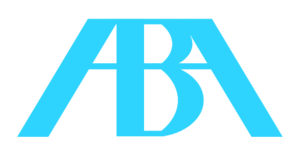
On July 15, 2020, the ABA Standing Committee on Ethics and Professional Responsibility issued Formal Opinion 493 to provide guidance on the purpose, scope, and application of Model Rule 8.4(g). See ABA Formal Opinion 493 (July 15, 2020). In 2016, the ABA amended Model Rule 8.4 to include a broad anti-discrimination and anti-harassment provision and three related comments. The amendment, which was sponsored by several ABA groups, added this new paragraph (g) to the black-letter of Rule 8.4:
It is professional misconduct for a lawyer to: . . . (g) engage in conduct that the lawyer knows or reasonably should know is harassment or discrimination on the basis of race, sex, religion, national origin, ethnicity, disability, age, sexual orientation, gender identity, marital status or socioeconomic status in conduct related to the practice of law. This paragraph does not limit the ability of a lawyer to accept, decline, or withdraw from a representation in accordance with Rule 1.16. This paragraph does not preclude legitimate advice or advocacy consistent with these rules.
ABA Revised Resolution 109 (adopted Aug. 8, 2016).
Unfortunately, the scope of Model Rule 8.4(g) is not clear from the text itself. Recognizing this problem, several states, including Louisiana, have declined to adopt a disciplinary standard identical to or analogous to the model rule. See ABA Center for Prof’l Responsibility, Policy Implementation Committee, Jurisdictional Adoption of Rule 8.4(g) of the ABA Model Rules of Professional Conduct (as of June 13, 2019). Indeed, Louisiana’s decision to reject an anti-discrimination provision like Mode Rule 8.4(g) was well-founded–particularly because the ABA rule includes ambiguous terms that could engender litigation and create uncertainty.
ABA Formal Opinion 493 seeks to address some of Rule 8.4(g)’s flaws by clarifying its terms and by providing application hypotheticals. According to the opinion, Rule 8.4(g) does not seek to regulate all offensive or unpopular viewpoints. Rather, the rule prohibits a lawyer from engaging in “harassment” or “discrimination.” Harassment includes “derogatory or demeaning verbal or physical conduct.” “Sexual harassment” is more specifically described as “unwelcome sexual advances, requests for sexual favors, and other unwelcome verbal or physical conduct of a sexual nature.” Discrimination is defined to include “harmful verbal or physical conduct that manifests bias or prejudice towards others.” For example, it would be an obvious violation of Rule 8.4(g) for a partner at a law firm to make repeated comments about an associate’s appearance or to make unwelcome, nonconsensual physical contact of a sexual nature with the associate.
The opinion also clarifies that the model rule regulates lawyers engaged in activities outside of the attorney-client relationship or beyond the courtroom. Indeed, the rule regulates “conduct related to the practice of law” including interacting with witnesses, co-workers, court personal and participating in bar association, business, or social activities in connection with the practice of law. Model Rule 8.4(g), cmt. 4. For example, a lawyer may not make discriminatory remarks while participating as a speaker at a CLE program. On the other hand, a lawyer would not violate Rule 8.4(g) by making a discriminatory remark within his home when his conduct is unrelated to the practice of law. While such a comment may be problematic for the lawyer for other reasons, Rule 8.4(g) “does not prevent a lawyer from freely expressing opinions and ideas on matters of public concern, nor does it limit in any way a lawyer’s speech or conduct in settings unrelated to the practice of law.” See ABA Formal Opinion 493, p. 14.
Furthermore, the committee clarified that a lawyer would not violate Rule 8.4(g) by representing an organization advancing a seemingly discriminatory position. For example, a lawyer would not violate Rule 8.4(g) by challenging on First Amendment grounds a local ordinance that requires schools to provide gender-neutral restrooms or locker room facilities. See ABA Formal Opinion 493, p. 12. The Rules of Professional Conduct make clear that accepting the representation of a client does not constitute an endorsement by the lawyer of the client’s views or activities. See Model Rules of Professional Conduct Rule 1.2(b).
Finally, the committee noted that the scope of Rule 8.4(g) is limited by the requirement that a violation requires a lawyer to have actual or constructive knowledge that the conduct in question constitutes discrimination or harassment. A partner’s comments to an associate that “you should never trust a Muslim lawyer and never represent a Muslim client” would violate Model Rule 8.4(g). See ABA Formal Opinion, p. 13-14. However, a lawyer’s remarks during a CLE presentation that race-conscious university admissions policies are harmful to minorities would not violate Rule 8.4(g). See ABA Formal Opinion 12-13. Although some lawyers may find this viewpoint to be inaccurate or upsetting, such a comment would not violate Rule 8.4(g). As noted by Formal Opinion 493: “A general point of view, even a controversial one, cannot be reasonably be understood as harassment or discrimination contemplated by Rule 8.4(g).”
It is unlikely that Formal Opinion 493 will persuade reluctant states, including Louisiana, to adopt an anti-discrimination provision similar to Model Rule 8.4(g). While the analysis and application hypotheticals in Formal Opinion 493 clarify the parameters and nuances of Model Rule 8.4(g), the opinion does little to curb the expansive reach of the rule’s anti-harassment provision or to ameliorate the risk of imposing discipline on innocent and merely negligent lawyers.
